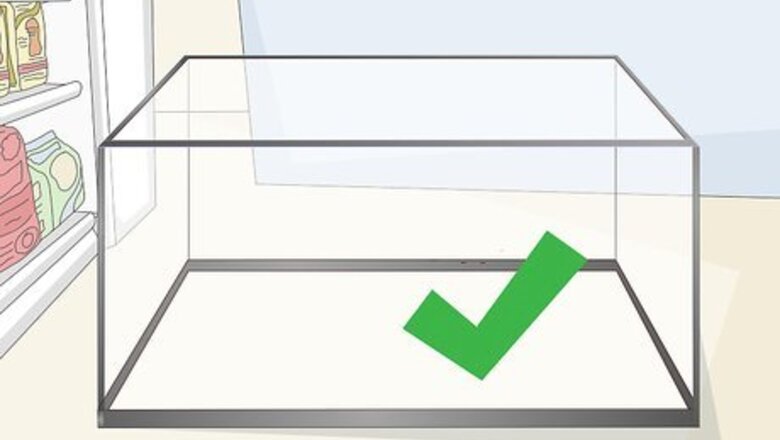
views
Setting up the Tank
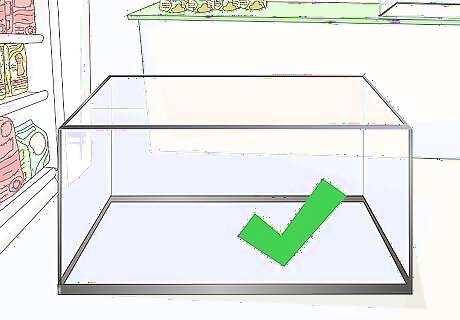
Purchase a large aquarium. Parrot cichlids can grow as large as 10 inches (25 cm) long. For this reason, you'll need to buy at least a 42-gallon (159 L) tank if you want to keep only one fish. Aim for 10 additional gallons (38 L) for each fish if you're planning on giving your fish some companions. Parrot cichlids like to have several hiding places along the bottom of the aquarium, so a taller tank wouldn't help.
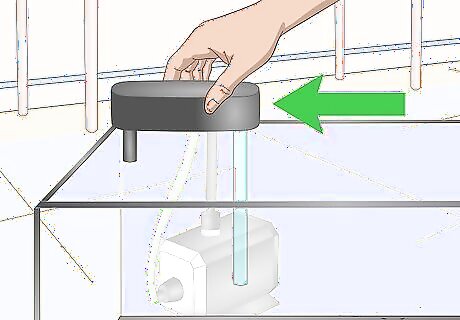
Install a large canister filter. Parrot cichlids are large fish with healthy appetites. Their tendency to dig in the substrate can stir up dirt and algae. This is why they require a larger filter. A heavy-duty wet/dry filter will help to remove these waste products and keep the water clean. Purchase a filter that can be mounted to the back of the tank. Avoid anything that goes under the substrate, as digging fish can easily disturb its functioning.
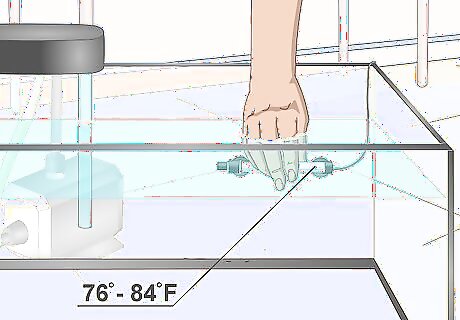
Keep a heater in the aquarium. Many breeds of parrot cichlids originate in warm South American climates. Keep the aquarium temperature about 76 to 84 °F (24 to 29 °C). Even blood parrot cichlids, bred in captivity by humans, thrive in warmer waters. Temperatures below 80 °F (27 °C) might cause cichlids to become less social.
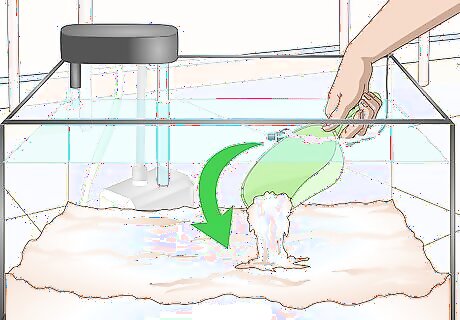
Add the substrate. Parrot cichlids like to dig, so make sure the substrate is soft. Opt for fine dark sand, which they can comfortably burrow under. Avoid putting plants in the aquarium, since the cichlid's tendency to dig could knock them over.
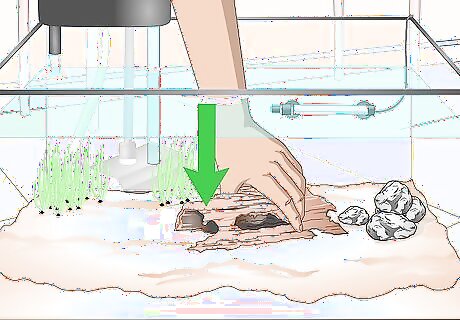
Provide the fish with hiding places. Parrot cichlids can be territorial, especially if you plan on adding smaller tankmates. Keep broken flowerpots, small rocks, driftwood, or stacked rocks to form caves that provide the fish with hiding spots.
Caring for Your Fish
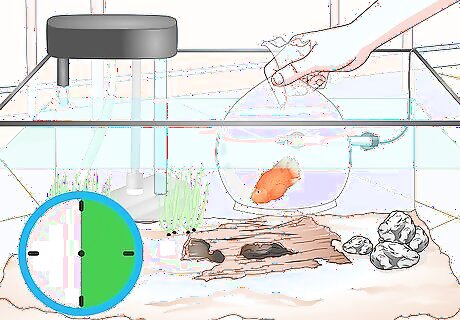
Acclimate your parrot cichlid. Place your cichlid into the aquarium while they're still in the bag. Let them remain there for at least 15–30 minutes. Then, gently scoop your fish into a net and into the aquarium. Dispose of the bag water by dumping it down the drain or watering your garden if you have one. Don't let any water from the bag drip into the aquarium. You should set up your fish tank about a month before you plan to add your fish. Because a tank needs time to build up the good bacteria and establish a natural cycle for the fish.
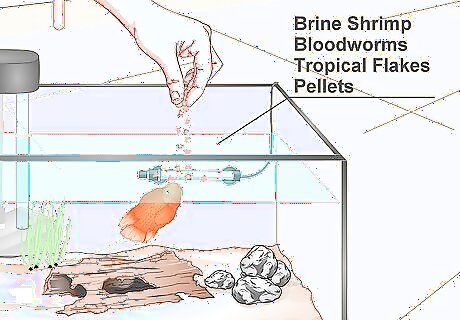
Give them the proper diet. Parrot cichlids are omnivorous, meaning that they'll eat plant or animal products. Proper food includes brine shrimp, bloodworms, tropical flakes, sinking pellets, and commercial parrot cichlid food. Make sure your fish get enough fiber to prevent swim bladder disease. Feed your fish at least twice a day.
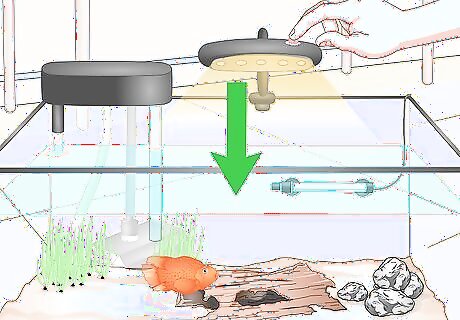
Control the lighting. Choose light bulbs that emit light from the red end of the visible spectrum. Purchase them at pet supply stores or hobbyist stores. Blue light could dull the color of your fish's scales. The lighting shouldn't be too bright, as cichlids prefer darker waters in the wild. Keep the wattage between 0.5 and 1 watt per gallon (4 L). Don't leave the lights on for more than 12 hours per day. Too much light for too long can encourage the growth of deadly cyanobacteria (also known as blue-green “algae”). Change the lightbulbs if they're a year old.
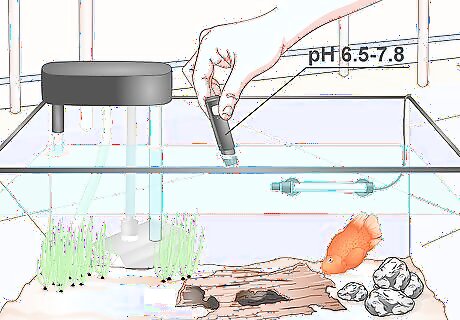
Monitor the pH. A good pH for a parrot cichlid would be between 6.5 and 7.8. Monitor the water and every object you put in the tank. This includes driftwood and other hiding places, as well as the substrate. Rocks that contain too much calcium can make the water too alkaline and can dull your fish's color. Wild breeds of parrot cichlids can tolerate pH levels as low as 4.0 before feeling any health effects. Buy pH testing strips in any pet supply store or big box store.
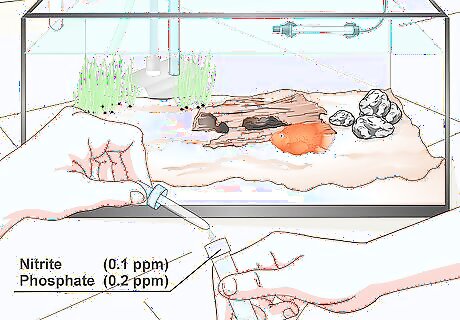
Test the nitrite and phosphate levels. High levels of nitrite and phosphate can contribute to cyanobacteria (blue-green algae), which can kill your fish. To prevent the algae from growing, use separate testing kits for nitrite and phosphate. Nitrite shouldn't exceed 0.1 parts per million (ppm), and phosphate shouldn't go over 0.2 ppm. If the phosphate levels get too high, add a phosphate-removing material to your filter. For high levels of nitrite, clean all debris from the tank with a siphon vacuum. Then, clean out your filter thoroughly. Remove a third of the water in the tank and replace with clean water. If you notice cyanobacteria growth, install balanced bulbs that emit 6,000 to 14,000 kilowatts. Lower the tank temperature to 76 °F (24 °C). Change 10 percent of the water every other day until nitrite and phosphate return to normal. Use a testing kit to measure their levels.
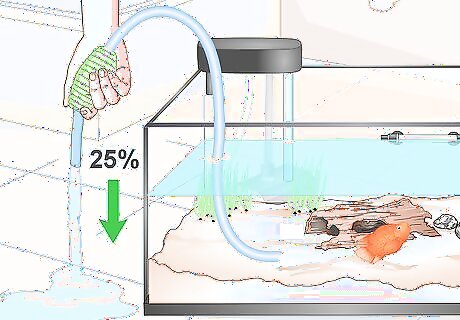
Clean the tank weekly. Siphon at least 20 to 25 percent of the water in the tank. Aim for 25 percent if you have several fish. Clean any algae growing on the glass and/or in the substrate. Algae can be green or brown when growing on surfaces. Algae blooms occur on the water. Tackle them by: Not worrying too much about green algae growing on decorations. It's generally harmless. Cleaning brown algae growing on the tank, with a sponge or algae magnet. Use a siphon vacuum to remove any algae growing on decorations or the substrate. Recognizing algae blooms. Green, cloudy water is the telltale sign. Replace all of the water. Clean the entire tank and its components thoroughly. Install a diatomic filter to remove any lurking algae and prevent recurrences.
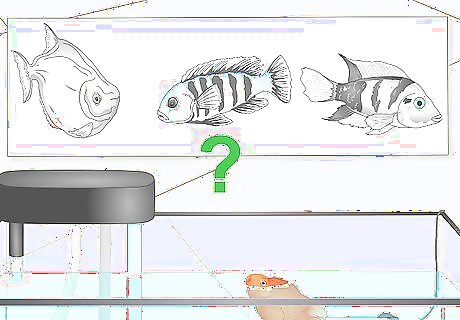
Choose tankmates carefully. Parrot cichlids are rather territorial and will act aggressively toward smaller fish. If you choose to add other fish, consider silver dollars, black skirt tetras, convict cichlids, and other semi-aggressive fish nearly the size of the parrot cichlid. Avoid smaller tetra, angelfish, discus, and ram cichlids.
Responding to Parrot Cichlid Diseases
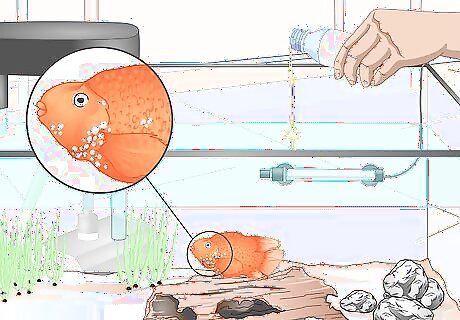
Treat Ich through environment and medicine. Ich is a highly contagious parasite that takes the form of small white cilia-covered spots on the fish's body. To fight it, raise the tank temperature to 86 °F (30 °C) for three days. This should kill the parasite. If the spots don't disappear after three days, put your fish in a quarantine tank and add cupramine (copper solution) to the water. Follow the instructions on the label. Keep the copper levels at 0.2 ppm. You can measure copper levels with a salifert test kit that you can find in hobby stores. Kill off the Ich in the original tank with aquarium salts, which you can buy in pet supply stores. Add one teaspoon (5 g) per gallon (4 L) of water every 12 hours for 36 hours. Let the salt remain in the tank for 7 to 10 days.
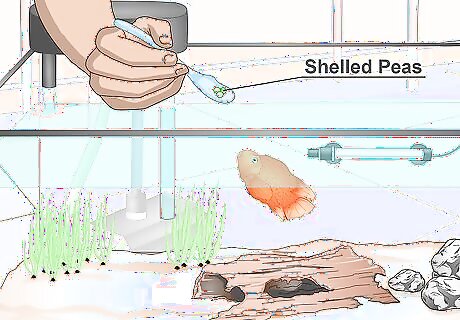
Change their diet for swim bladder disease. Blood parrot cichlids have parrot-like mouths and back humps. This unique anatomy puts them at risk for swim bladder disease. In this condition, the fish gets constipated and swims at an awkward angle. To correct this problem, feed the fish two to three shelled peas once a week to regulate the bowels.
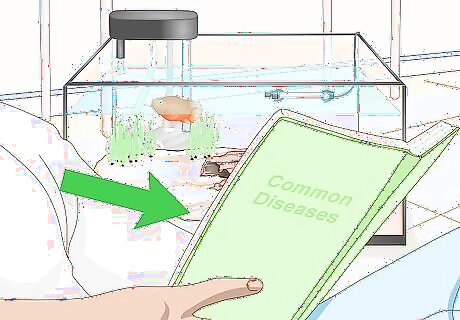
Study other common diseases. Parrot cichlids, especially blood parrot cichlids, are also prone to bacterial infections, fungal infections, and parasites like skin flues and worms. Talk to your vet or read books that detail common diseases among parrot cichlids. Recognize the early symptoms and how to treat them. As with many diseases, early detection can make a world of difference.















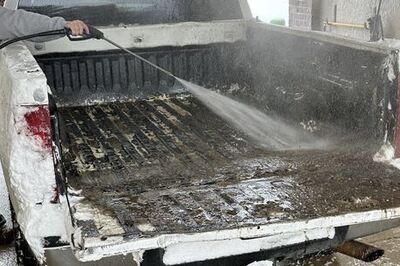
Comments
0 comment